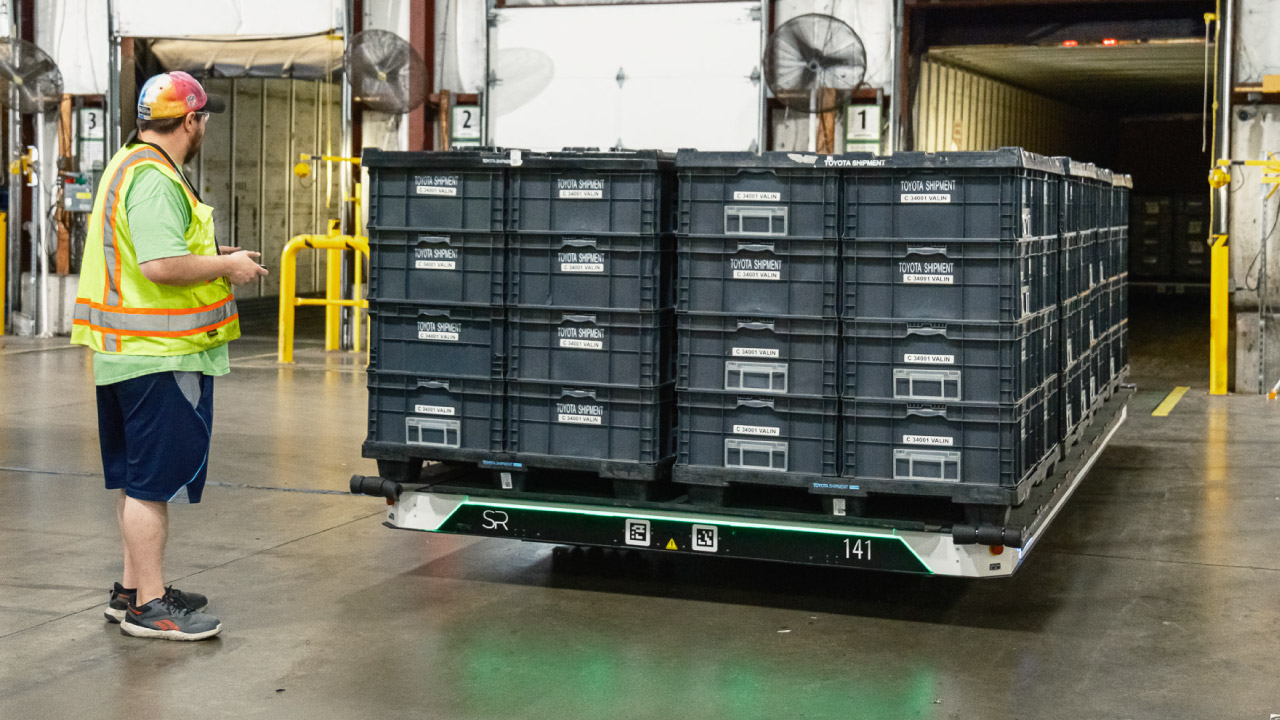The Role of Robotics in Dock Safety and Automation
August 15, 2024

Imagine a bustling warehouse. Forklifts zoom around, pallets are loaded and unloaded, and workers hustle to keep things moving. This fast-paced environment is essential for getting products to customers quickly, but it also comes with a hidden cost: safety risks.
Traditional dock operations are prone to accidents. Lifting heavy objects, maneuvering forklifts in tight spaces, and repetitive tasks can lead to muscle strains, back injuries, and even more serious consequences. These incidents result in both physical and emotional distress for employees while also imposing financial burdens on businesses due to reduced productivity, workers' compensation claims, and increased turnover rates.
Enter Robots: Transforming Dock Safety with Cutting-Edge Technology
Thankfully, automated dock solutions like SlipBots are transforming the way warehouses operate, putting safety at the forefront. These innovative robots are equipped with sensors and cameras that allows them to navigate the dock environment safely and efficiently.
SlipBots (or similar solutions) function by utilizing a combination of technologies. Sensors and cameras allow them to "see" their surroundings and detect obstacles. Combined with machine learning, these robots can make intelligent decisions about how to move around the dock, avoiding collisions and ensuring worker safety.
Beyond Safety: Automated Logistics Systems Boost Efficiency
The benefits of robotic dock automation extend far beyond just safety. By automating repetitive tasks like loading and unloading pallets, robots free up human workers to focus on more complex activities. This not only improves worker satisfaction but also leads to a more efficient automated logistics system.
Robots can work tirelessly, meaning warehouses can operate for extended hours without worrying about worker fatigue. This translates to faster order fulfillment and quicker delivery times, keeping customers happy.
A Glimpse into the Future of Automated Logistics
The future of automated logistics is bright, with exciting advancements on the horizon. Collaborative robots, known as cobots, are engineered to operate alongside humans, enhancing both safety and efficiency. This makes them much safer to work around than traditional industrial robots, which are typically kept in cages or behind safety barriers.
As the integration of artificial intelligence (AI) and machine learning continues to evolve, cobots are becoming even more intuitive and responsive. These advancements allow them to adapt to dynamic environments, learn from their interactions, and make real-time decisions that optimize workflow. This synergy between human workers and AI-powered cobots is set to revolutionize the logistics industry, reducing errors, improving productivity, and driving down operational costs.
While automation may raise concerns about job displacement, it's important to remember that robots are tools to empower human workers. As robots take over the heavy lifting and repetitive tasks, workers can focus on higher-level cognitive functions that require creativity and problem-solving skills. These advancements are expected to generate new job opportunities in fields like robotics maintenance, data analysis, and system optimization, particularly within automated logistics systems.
The Future is Now: Embrace Robotic Dock Automation for a Safer, More Efficient Supply Chain
Robotic dock automation is a reality now, not just a future pipedream. Integrating robots into your warehouse operations can create a safer work environment for employees, enhance efficiency, and optimize your entire supply chain.
Contact Us Today
Take control of your future and contact Slip Robotics today to learn more about how our robotic dock automation solutions can transform your warehouse.













.jpg)
.jpg)




